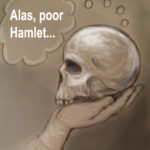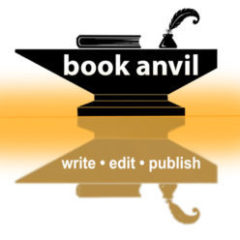 In this post I’ll take a tour through what constitutes ‘head-hopping’ and what doesn’t.
In this post I’ll take a tour through what constitutes ‘head-hopping’ and what doesn’t.
Many new writers are so eager to tell a story from all its angles that they hop happily from one person’s perspective to another’s. It’s the reading equivalent of watching a crowd whirl by while on a merry-go-round. Here’s a rough-built example:
Eloise got to Suzy’s house just as the clock struck eight. As she passed into the hall she decided to be direct. ‘Are we friends today?’
Suzy shrugged. She didn’t want Eloise to think she was automatically going to forgive her. ‘What do you want, Eloise?’
Eloise had known Suzy wasn’t going to be easy, but she’d thought her arrival at the house would at least bring a smile. It hadn’t, and this disappointed her. ‘I thought we could talk.’
‘We can sit in the conservatory,’ said Suzy, with a shrug. She didn’t like being visited without warning; she hadn’t had time to dress properly. She felt sloppy and unprepared. Grudgingly she added, ‘Don’t sit on the cat. His name is Edgar and he scratches.’
‘Oh, great,’ Eloise thought as she sat in the next chair. ‘Now I have to look out for two sets of claws.’
In the above example, there are too many changes of perspective to allow a reader to follow the scene. Worse, these shifts have no strong reason to occur where and when they do. Each only serves to provide information that couldn’t be told otherwise. The result is a clear case of head-hopping: that is, haphazard or over-frequent changes in perspective that interrupt reading.
Every time you shift perspective, you trouble reader immersion and cause some degree of disorientation. Each of these shifts asks for an effort on the reader’s part to become oriented again. When you interrupt reader immersion too frequently and/or fail to provide sufficient pleasures to make up for the interruption, guess what? The reader drops the story.
Of course, frequent point-of-view changes aren’t necessarily a problem. Sometimes reader surprise and suspense can be heightened by point-of-view intercutting. What keeps such sequences from being classed as head-hopping is the degree to which the author understands the effects of point-of-view switches and uses them judiciously.
Think of the opening to any of a number of famous crime-thrillers. A classic beginning involves the predator and prey in a series of short, staccato point-of-view sections that only finish when one is seized by the other (after this, we generally cut to the role of the detective). A similar use of frequent intercutting occurs when, after the early part of a novel has been used to set up differences in characterisation, a high energy conflict scene depicts two characters in battle. In the latter example, point-of-view switches are used to heighten suspense and increase the sense of chaotic conflict.
In all narratives in which point of view changes, the characters that have been given point-of-view roles remain connected at some level to questions of theme. In the first example of intercut sequences above, the crime victim represents victimhood and a puzzle for the detective to solve while the predator, in revealing glimpses of his or her psychology, sets up the story’s chief antagonism.
If a seemingly irrelevant character is given a point-of-view role, the reader will expect that character to become important. If this doesn’t happen, the reader learns to distrust the writer. Never swap heads to an unimportant character just because you feel his or her point of view will be interesting—that will certainly break trust. When you shift perspective, a reader needs to believe you’re doing it for good reason.
Regardless of purpose, successful authors always cue the reader in as to whose head he or she inhabits. Whenever the switch is made, there should be hints in tone, voice, outlook, physicality and/or dialogue to enable a reader to understand whose perspective has been taken up. In large part, the success of books involving multiple point-of-view shifts hinges on a writer’s skill at embodying character within the writing.
As long as point-of-view shifts are made for good reason, there are endless permutations available for the writer to use. Some kinds of suspense story work by immersing a single character in a difficult and perplexing situation—many first person crime stories follow this pattern. Much modern romantic (and some dystopian) fiction relies on a single personal point of view running through the narrative, with no interruptions to this pattern. Longer works such as trilogies often use multiple points of view by turns: GRR Martin’s A Song of Ice and Fire would be nowhere without its marvellous chapter-by-chapter changes in perspective (what keeps the material fresh in Martin’s work is that even if two point-of-view characters touch on the same circumstances they do so from such extraordinarily different perspectives that the circumstances are largely unrecognisable). At first glance, Graham Greene’s The Third Man uses a mixture of first person and third person storytelling. However in actual fact the third person material is being narrated (at one remove) by the first person main character: ‘I have reconstructed the affair as best I can,’ he informs us near the beginning, and what follows, though presenting itself as an omnisciently told third person story, is basically his account. There are many ways to fashion point of view, but all the above writers prove to have strong rationales behind their choices.
Some books use omniscient storytelling as a bracket around sections of more personal, close orientation. Omniscient storytelling suits works that are ironic or satirical. Jane Austen wrote under an umbrella of ironic social commentary in Pride and Prejudice: ‘It is a truth universally acknowledged, that a single man in possession of a good fortune must be in want of a wife.’ This allowed her to dip into and out of close personal perspectives when she chose. Of course, the novel comes to favour Elizabeth’s point of view as it progresses—sensibly, since hers is the one most affected by its incidents—but the story occasionally offers Mr Darcy’s perspective as well: ‘To Mr Darcy it was welcome intelligence—Elizabeth had been at Netherfield long enough. She attracted him more than he liked…’ While robbing a reader of the suspense of not knowing Mr Darcy’s feelings, the intrusion of his point of view helps keep the work within Austen’s irony-rich sphere of intent.
A less time-worn example of close personal storyelling bracketed (and sometimes interrupted) by authorial omniscience is, of course, Terry Pratchett’s Discworld series. Like Austen, his use of point of view revoles around pre-made creative decisions like overall voice, tone, themes and intent. Even his information-rich footnotes are not merely imparting information, but are fabulous rhetorical feints and jokes reminding the reader that there’s a writer speaking.
As a last point, nothing is disallowed in experimental or literary fiction, so even a work that head-hops ludicrously might have its recognisable place. For instance, a writer might deliberately design a story in which two separate identities and perspectives come together at the finale in a completely head-hoppy sequence that draws into question a reader’s sense of subjectivity and ability to distinguish personalities at all. But that would be taking a slightly experimental, formalistic approach to narrative, and most readers aren’t looking to enjoy metafictional treatises. Most readers just want to stay in a story, and conscious, careful use of point of view (with or without shifts) will surely help manage that.


 In this post I’ll take a tour through what constitutes ‘head-hopping’ and what doesn’t.
In this post I’ll take a tour through what constitutes ‘head-hopping’ and what doesn’t.